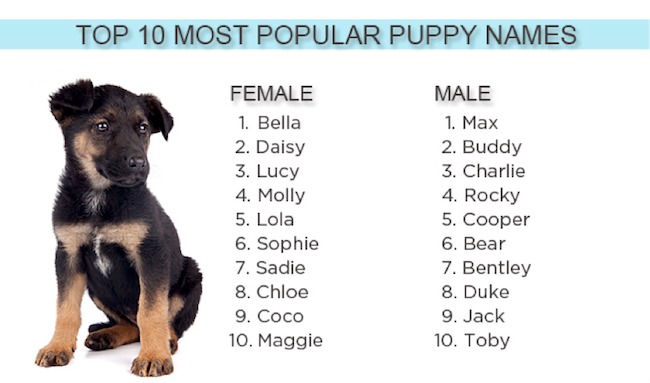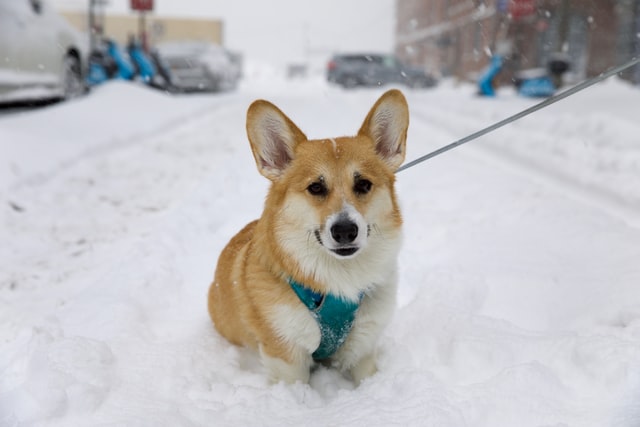If your dogs are stressed out, at best, you’ll notice some behavioral clues that they’re feeling anxious and/or fearful, ranging from panting and excessive yawning, to its worst, acute diarrhea, vomiting, or even aggressive acts like lunging at other dogs or people. Because every dog is different, and every dog reacts differently to different kinds of stressors, it’s important to know your dog and what his “trigger-stressors” are, in order to help minimize or even prevent the stress from occurring. But the initial stress signals dogs give off are actually difficult for most people to recognize as indicators of anxiety.
Unfortunately, pet stressors lurk around every corner and what totally freaks out one dog doesn’t even cause another to raise an eyebrow. Pets can get stressed by things as small as unfamiliar noises and weather changes to larger stressors like absences, a disruption in routine, or a stranger in the home. Typically, though, these stresses can be soothed by a calm manner from you, a regular routine, and the assurance that all is well (or will be soon). But if not calmed, and if the stressor remains, or gets worse, the dog just gets more and more anxious, which can result in illness, sensitization to the stressor (meaning that the next time it’s encountered, it will take less of it or a lower threshold of it to cause upset), or fear-based aggression.
The following behaviors – exhibited through almost every visible body part, are obvious signs that your dog is feeling anxious. The more signals you observe occurring together, the more stressed your dog is. In addition, there is an escalating scale of behaviors that correspond to escalating anxiety/fear. We’ve grouped the most common stress responses by body part, and in escalating order of severity.
Eyes:
Blinking and squinting: Unlike cats, for whom deliberate eye blinking is a way of communicating their extreme pleasure with you, to you, dogs who deliberately blink and/or squint are signaling that they’re mildly stressed.
Turning away and avoiding eye contact: The dog is communicating: “I’m stressed out by this person/this dog/this environment and I would like to remove myself from the situation.” I see this in my dog whenever there’s a stranger in the house: he alternates between barking at the person, then immediately turning away, whenever the person tries to come closer or extend a hand in peaceful friendship. My dog wants none of it!
Staring: The universal sign of aggression in the animal kingdom, the pointed, unblinking stare is an invitation to fight, or for the other animal to back down and flee. If you observe two dogs staring each other down, an aggressive encounter is likely to occur.
Ears:
Low ear carriage: Most people don’t really pay attention to their dogs’ ears. But, with the exception of floppy-eared dogs, which are always carried low, if your dogs are carrying their ears at a lower level than normal, they are feeling some mild stress from something in their environment. You can have fun testing this one out the next time you notice your dogs’ ears lowering: scan the environment and remove the perceived stressor, or remove the dog from the environment and take note of the response: if you see ears raise, then you’ve protected your dog from stress and this will increase the trust and bond with your dog.
Mouth/Tongue:
Yawning: Yawning doesn’t often mean boredom or sleepiness, but is really the first level response to a mild stressor. The act of yawning itself is stress relieving and helps a dog release some of the anxiety that’s building up internally. When comparing different kinds of yawns, a yawn in an inappropriate environment or context (in public, at the vet’s office, around people, etc.) is likely due to stress as opposed to a relaxed and languorous yawn after just waking up. Stress-yawns also come with facial muscle tension, and also look exaggerated.
Lip-licking and Panting: If you see your dog’s tongue darting in and out of his mouth quickly (like a little lizard), and/or panting, this is a sign that your dog is experiencing stronger stress.
Drooling: Newfoundlands, Basset Hounds, and Saint Bernards aside, drooling can be an extreme sign of stress, for dogs that don’t typically drool. One of my dogs has ropes of drool streaming out behind him any time we take him to a new dog park. It’s clear that he’s conflicted: he is stressed out with the unfamiliar environment, but at the same time loves the opportunity to run off leash and potentially make new friends.
Breath and Vocalizing:
Coughing and/or Sneezing: Like yawning, blinking, and panting, coughing and sneezing are the body’s way of releasing pent-up stress or confusion in an unfamiliar situation.
Huffing and Puffing: Huffing, puffing, or (in our house) “chuffing” is when the dog rapidly exhales a small amount of air, that sounds like a cross between an exhale and a bark. It’s a form of stress relief, and can also be a precursor to escalating aggressive behaviors.
Holding Breath: It can be hard to notice if a dog is holding his or her breath, but when a dog does, it’s typically a warning sign to beware potential aggression. The dog is gearing up for a fight.
Barking/Growling: The most recognizable form of stress: though there are a wide variety of barks, each with its own specific message to communicate, they all indicate the need to relieve stress. You will probably recognize your dog’s individual barks and growls, each of which is associated with some “stressor” or another:
-
“I’m lonely! Come play with me”
-
“There’s an intruder approaching! Warning! Warning!”
-
“Don’t come closer… or else!”
-
“I’m bored.”
-
“Don’t leave me!”
-
“Stay away! I’m one bark away from snapping at you!”
Learn more about the meaning of dog barks and test your ability to “speak dog” here!
Tail:
Slow tail wag: Contrary to the windshield-wiper like fast wagging tail of a happy dog, a slow tail wag is an indicator of lack of confidence and wariness.
Tail tucked between legs: This is a classic fear-signal, and in a dog, feeling fearful is an extreme form of stress that can lead to potentially dangerous situations like fear-biting.
Digestion/Elimination:
Urination/Marking: Just because a dog is male doesn’t mean he necessarily has to mark everything in sight. Typically, excessive marking is a way that male dogs alleviate their stress (even if the stress is as simple as: “There’s been another dog here! I want to let other dogs know I was the last one here! I own this fire hydrant!”).
Not eating/not taking treats. If your dog is typically food-motivated (and what dog isn’t?), not taking a treat, even if it’s their favorite kind, is a sign that something else in the environment is too distracting and worrisome for them. Think about the fight/flight response: if an animal is concerned about needing to either flee from a predator or defend their territory, eating is the LAST thing on its mind. Eating only happens when an animal is truly relaxed and comfortable in the environment.
Diarrhea: It’s very common for dogs and cats to have acute diarrhea when they are stressed out, typically due to an upset in their routine. Just about every time we go away and have to leave the dogs, they respond by having diarrhea, to the understandable chagrin of our pet-sitter.
Whole-Body:
Shaking Off (like the dog is shaking off water): Similar to yawning, panting, and drooling, shaking off is a dog’s body’s way of physically releasing any tension that’s building up inside. “Shake it off” is completely literal in this case!
Pacing: Do you have a Woody Allen-like dog? If so, he probably paces when he gets worried or anxious. A lot of dogs pace when they are anticipating their owners’ return after a long day home alone.
Shedding: Dogs and cats involuntarily shed much more when they are stressed out: it’s part of the body’s natural defense mechanism. This is why you typically return home from the vet entirely covered in fur!
Trembling: If your dog isn’t cold, trembling is a sign of extreme stress or fear. One of my dog trembles like a leaf if she’s been in the car more than about 30 minutes. I suspect she gets carsick. As soon as we stop the car and let her out for a bit, the trembling stops.
Spacing out or falling asleep: Again, similar to humans, if the anxiety is simply unbearable, some dogs will simply shut down, zone out, and fall asleep to avoid the stress. These dogs are much more comfortable in “flight” mode than “fight” mode. And sleep is typically a great cure for stress! It’s why my other dog goes right to sleep in the car after 30 minutes… I suspect it upsets him too, but he deals with it by zoning out and shutting down!
Not playing. Like eating, playing only happens when the animal feels totally comfortable, happy, and relaxed. The first time I ever took my dogs to a dog park, they acted completely different from the way they act now when they just hear the words “Dog Park!” The first time they were exposed to that new environment, populated with more dogs than they’d ever seen before, they ran in, tucked their tails any time another dog tried to sniff them, ran away from other dogs, panted and drooled profusely, and yawned a lot. All major signs of stress, which were alleviated when we moved into the shy/small dog area as a slow introduction to the bigger dog park world.
Stiffness and Raised Hair/Hackles: Typically exhibited as a warning sign to “back off!,” a dog that’s standing stock still and also staring intently, with its hair bristling is a sure sign that the dog is not happy with its situation and wants the offending dog/animal/person to back away and leave him alone!
Lunging: The last “warning sign” that the dog is feeling threatened and stressed out, before true damage is done through an all-out attack or bite. Hopefully, you’ll have identified, and removed, the stressor to your dog long before he gets to this level of upset.






